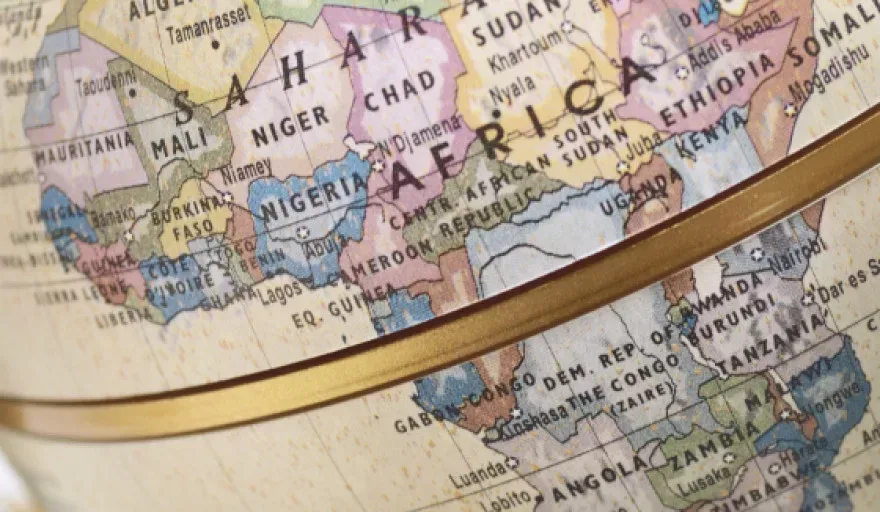Nigeria and Kenya frequently feature as the top investment destinations in Africa, with Nigeria being the clear front runner. Investors, however, are starting to view East Africa as a combined investment region that could rival the West African giant, using Kenya as a sturdy stepping stone to the wider East African region.
While Nigeria dwarfs Kenya in terms of both population and GDP (see below), comparing the EAC (East African Community) as a whole tells a slightly different story.
| Indicator* | Nigeria | EAC** |
| Population (millions) | 173 | 153 |
| GDP (current US$b) | 521 | 123 |
* All estimates are as of 2013
**The East African Community consisting of Burundi, Rwanda, Tanzania, Kenya, and Uganda
Having rebased its GDP for the first time in 2014, Nigeria’s GDP is now at US$521 billion, an increase of 89 percent over pre-basing estimates. The rebasing also revealed a more diversified economy than previously thought, with significant increases in the contribution of the services sector, manufacturing, construction, and water and electricity.
While Kenya’s GDP is estimated at a much smaller US$44 billion, the EAC’s GDP is estimated at a healthy US$123 billion.
GDP Growth
Nigeria’s real GDP grew by 7.4 percent in 2013, up from 6.5 percent the previous year and on top of strong growth for the past decade.
The biggest contributors to GDP came from the non-oil sector with real GDP growth of 8.3 percent and 7.8 percent in 2012 and 2013, respectively. Agriculture, particularly crop production, trade and services continue to be the main drivers of the non-oil sector growth. On the other hand, the oil sector growth performance was not as impressive with -2.3 percent and 5.3 percent estimated growth rates in 2012 and 2013 respectively. Poor growth in 2013 was a consequence of supply disruptions arising from oil theft and pipeline vandalism, and by weak investment in upstream activities.
Looking at East Africa, most countries in the region are expected to achieve growth rates over 6% in the short term. Growth will be chiefly driven by the agricultural, mining, tourism and industrial sectors. Rwanda, Tanzania and Uganda) are forecast to maintain growth of around 7% in the next two years; while Burundi is forecast to grow between 5% and 6% over the same period. Major oil and gas discoveries have been made in Uganda and Tanzania with the potential of transforming those economies to middle-income status in the future.
Kenya, the largest economy in the region, achieved real GDP growth of 4.7 percent in 2013, an increase of its annual average growth of 3.7 percent between 2008 and 2012. Its 2013 figure fell short of government’s estimate of 6 percent as tourism (the second-largest source of foreign exchange) slumped over security concerns amid deadly attacks by al-Shabaab militants at the West Gate mall in Nairobi.
While agriculture still accounts for almost a third of Kenya’s GDP, the sector grew by a mere 0.6 percent while the industrial and services sectors posted growth rates of 4.0 percent and 4.5 percent, respectively. Kenya’s short-term growth prospects are bright with GDP forecasts in the region of 5-6 percent per annum, with the primary drivers being private-sector investments and increased exports. Services, specifically finance, ICT and construction, will be at the core of GDP growth. In addition the recent discoveries of oil and gas in Kenya could boost Kenya’s economy even further over the coming decade.
Regional integration
Kenya has the edge over Nigeria when it comes to regional integration. Widely acknowledged as the most effective regional bloc in Africa, the EAC launched its own common market in 2010 for goods, labour and capital, with the goal of creating a common currency and eventually a full political federation. In 2013 a protocol was signed outlining plans for launching a monetary union. This signalled the beginning of a decade-long process that is expected to culminate in an EAC single currency and the East African Monetary Union (EMU) in 2023 if all goes according to plan.
The East Africa region is, however, not new to conflict and security concerns which could hinder progress, thereby changing the economic trajectory of this region. The recent peace and security issues in Kenya, Somalia and South Sudan, and political tensions that have grown in Burundi due to the run-up to 2015 elections are just some of the challenges faced by the member states that could deter investments in the region.
West Africa as a whole is also moving towards integration, though more slowly, and Nigeria is a leading member of the Economic Community of West African States (ECOWAS). In 2013, ECOWAS agreed on a Common External Tariff (CET), effective early 2015, which will result in the most-favoured nation import tariff (MFN) being reduced from 12.0 percent to 11.5 percent. This is widely viewed as a milestone given the earlier controversies and disagreements amongst ECOWAS member states since negotiations began in 2004. Reducing the MFN import tariff should facilitate improved trade, and deepen economic co-operation and integration in the region.
By Malimu Museru, Senior Analyst, RisCura





























